Review of a Semi-Empirical Modelling Approach for Cohesive Sediment Transport in River Systems
Abstract
:1. Introduction
1.1. Flocculation Process
1.2. Distinct Nature of Erosion and Deposition Processes of Cohesive Sediment
2. Materials and Methods
2.1. Description of the RIVFLOC Model
2.1.1. Transport and Dispersion Component
- For the upstream boundary, a known transverse distribution of fine sediment entering the river has to be specified together with the size distribution of the sediment. This can be obtained either by direct measurement or from some other calculations.
- At the side banks, the sediment fluxes crossing these banks are zero, and hence the concentration gradients across those boundaries are taken as zero.
- At the bed, the sediment fluxes across the sediment–water interface need to be specified. Transfer of sediment between the bed and water column can occur because of the following three processes, namely, erosion, deposition and entrapment (ingress of fines in coarse bed sediment). The first two processes were studied extensively in the literature. For example, the erosion rate of fine sediment has been studied by Partheniades [3], Mehta and Partheniades [41], Parchure [30], Lick [13], and Krishnappan et al. [42]. Deposition characteristics of fine sediment were studied by Krone [11], Mehta and Partheniades [12], Lick [13], among others.
2.1.2. Flocculation Stage
2.2. A Computational Methodology for the Lateral Variation of the Longitudinal Velocity U
2.3. Determination of Model Parameters Using a Rotating Circular Flume
2.4. Collection of Sediment Samples for Testing in the Rotating Circular Flume
2.5. Testing of Cohesive Sediments Transport Characteristics in the Rotating Circular Flume
3. Results
3.1. Determination of Critical Shear Stress for Deposition
3.2. Determination of Critical Shear Stress for Erosion and the Erosion Rate
3.3. Influence of Initial Concentration on the Deposition Process
3.4. Size Distribution of Suspended Sediment Flocs
3.5. Determination of Cohesion Parameter β and Empirical Parameters B and C
3.6. Review of the Variability of Model Parameters
3.7. Importance of the Entrapment Process
4. Discussion
5. Conclusions
Funding
Institutional Review Board Statement
Informed Consent Statement
Data Availability Statement
Conflicts of Interest
References
- Raudkivi, A.J. Loose Boundary Hydraulics, 4th ed.; Balkema, A.A., Ed.; CRC Press: Boca Raton, FL, USA.
- Van Leussen, W. Aggregation of Particles, Settling Velocity of Mud Flocs. In Physical Processes in Estuaries; Van Leussen, D., Ed.; Springer: New York, NY, USA, 1988. [Google Scholar]
- Partheniades, E. A study of erosion and deposition of cohesive soils in salt water. Ph.D. Thesis, University of Florida, Gainesville, FL, USA, 1962. [Google Scholar]
- Partheniades, E. Results of recent investigation on erosion and deposition of cohesive sediments. In Sedimentation; Shen, H.W., Ed.; Colorado State University: Fort Collins, CO, USA, 1972. [Google Scholar]
- Partheniades, E. The present state of knowledge and needs for future research on cohesive sediment dynamics. In River Sedimentation, Proceedings of the 3rd International Symposium; Wang, S.Y., Shen, H.W., Ding, L.Z., Eds.; School of Engineering, University of Mississippi: Jackson, MS, USA, 1986; Volume 3, pp. 3–25. [Google Scholar]
- Partheniades, E.; Kennedy, J.F. Depositional behaviour of fine sediments in a turbulent fluid motion. In Proceedings of the 10th Conference on Coastal Engineering, London, UK, 1–5 September 1966; American Society of Civil Engineers: New York, NY, USA, 1966; Volume 2, pp. 707–724. [Google Scholar]
- Patheniades, E.; Cross, R.H.; Arora, A. Further results on the deposition of cohesive sediments. In Proceedings of the 11th Conference on Coastal Engineering, London, UK, 16–20 September 1968; American Society of Civil Engineers: New York, NY, USA, 1968; Volume 2, pp. 723–742. [Google Scholar]
- Einstein, H.A.; Anderson, A.G.; Johnson, J.W. A distinction between bed-load and suspended load in natural streams. Trans. Am. Geophys. Union 1940, 21, 628–633. [Google Scholar] [CrossRef]
- Einstein, H.A. The Bed Load Function for Sediment Transportation in Open Channel Flows; Technical Bulletin No. 1026; U.S. Department of Agriculture, Soils Conservation Service: Washington, DC, USA, 1950.
- Yalin, M.S. Mechanics of Sediment Transport, 1st ed.; Pergamon Press: Braunschweig, Germany, 1972. [Google Scholar]
- Krone, R.B. Flume Studies of Transport of Sediment in Estuarial Shoaling Processes: Final Report; Hydraulic Engineering Laboratory and Sanitary Engineering Research Laboratory, University of California: Berkeley, CA, USA, 1962. [Google Scholar]
- Mehta, A.J.; Partheniades, E. An Investigation of the Depositional Properties of Flocculated Fine Sediments. J. Hydraul. Res. 1975, 13, 361–381. [Google Scholar] [CrossRef]
- Lick, W. Entrainment, deposition and transport of fine grained sediments in Lakes. Hydrobiologia 1982, 91, 31–40. [Google Scholar] [CrossRef]
- Krishnappan, B.G.; Engel, P. Critical shear stresses for erosion and deposition of suspended sediments of the Fraser River. In Cohesive Sediments; Burt, N., Parker, R., Watts, J., Eds.; John Wiley and Sons: Chichester, UK, 1997; pp. 279–288. [Google Scholar]
- Krishnappan, B.G.; Marsalek, J. Chapter 8: An example of modelling flocculation in a freshwater aquatic system. In Flocculation in Natural and Engineered Environmental Systems; Droppo, I., Leppard, G.G., Liss, S.N., Mulligan, T.G., Eds.; CRC Press: Boca Raton, FL, USA, 2005; pp. 171–188. [Google Scholar]
- Packman, A.I.; Brooks, N.H.; Morgan, J.J. Physico-chemical model for colloid exchange between a stream and a sand stream bed with bedforms. Water Resour. Res. 2000, 36, 2351–2361. [Google Scholar] [CrossRef]
- Packman, A.I.; Brooks, N.H.; Morgan, J.J. Kaolinite exchange between a stream and stream bed: Laboratory experiment and validation of a colloidal transport model. Water Resour. Res. 2000, 36, 2363–2372. [Google Scholar] [CrossRef]
- Owen, M.W. A Detailed Study of Settling Velocities of an Estuarine Mud; Report INT78; Hydraulic Research Station: Wallingford, UK, 1970. [Google Scholar]
- Ongley, E.D.; Bynoe, M.C.; Percival, J.B. Physical and geochemical characteristics of suspended solids, Wilton Creek, Ontario. Can. J. Earth Sci. 1981, 18, 1365–1379. [Google Scholar] [CrossRef]
- Droppo, I.G.; Ongley, E.D. Flocculation of suspended solids in Southern Ontario rivers. Water Res. 1994, 28, 1799–1809. [Google Scholar] [CrossRef]
- Droppo, I.G.; Leppard, G.G.; Liss, S.N.; Milligan, T.G. Chapter 20: Opportunities, Needs and Strategic Direction for Research on Flocculation in Natural and Engineered Systems. In Flocculation in Natural and Engineered Environmental Systems; Droppo, I., Leppard, G.G., Liss, S.N., Mulligan, T.G., Eds.; CRC Press: Boca Raton, FL, USA, 2005; pp. 407–421. [Google Scholar]
- Rao, S.S.; Droppo, I.G.; Taylor, C.M.; Burnison, B.K. Fresh Water Bacterial Aggregate Development: Effects of Dissolved Organic Matter; NWRI Contribution 91–75; National Water Research Institute, CCIW: Burlington, ON, Canada, 1991. [Google Scholar]
- Leppard, G.G. Evaluation of electron microscope techniques for the description of aquatic colloids. In Environmental Particles; Buffle, J., Van Leeuwen, H.P., Eds.; IUPAC Environmental and Analytical Chemistry Series; Lewis Publishers: Boca Raton, FL, USA, 1992; Volume 1, pp. 231–289. [Google Scholar]
- Ruehrwein, R.A.; Ward, D.W. Mechanism of clay aggregation by polyelectrolytes. Soil Sci. 1952, 73, 485–492. [Google Scholar] [CrossRef]
- La Mer, V.K.; Heley, T.W. Adsorption-flocculation reactions of macromolecules at the solid-liquid interfaces. Rev. Pure Appl. Chem. 1963, 13, 112–132. [Google Scholar]
- Busch, P.L.; Stumm, W. Chemical interactions in the aggregation of bacteria: Bio-flocculation in waste treatment. Environ. Sci. Technol. 1968, 2, 49–53. [Google Scholar] [CrossRef]
- Ariathurai, R.; Arulanandan, K. Erosion rates of cohesive soils. J. Hydraul. Div. ASCE 1978, 104, 279–283. [Google Scholar] [CrossRef]
- Lee, D.-Y.; Lick, W.; Kang, S.W. The Entrainment and Deposition of Fine-Grained Sediments in Lake Erie. J. Great Lakes Res. 1981, 7, 224–233. [Google Scholar] [CrossRef]
- Dixit, J.G. Resuspension Potential of Deposited Kaolinite Beds. Master’s Thesis, University of Florida, Gainesville, FL, USA, 1982. [Google Scholar]
- Parchure, T.M. Erosional Behaviour of Deposited Cohesive Sediments. Ph.D. Thesis, University of Florida, Gainesville, FL, USA, 1984. [Google Scholar]
- Krishnappan, B.G. Erosion behaviour of fine sediment deposits. Can. J. Civ. Eng. 2004, 31, 759–766. [Google Scholar] [CrossRef]
- Hayter, E.J. Finite Element Hydrodynamic and Cohesive Sediment Transport Modelling System; Department of Civil Engineering, Clemson University: Clemson, SC, USA, 1987. [Google Scholar]
- Krishnappan, B.G. Modelling of cohesive sediment transport. In Proceedings of the International Symposium on the Transport of Suspended Sediment and its Mathematical Modelling, Florence, Italy, 2–5 September 1991. [Google Scholar]
- Krishnappan, B.G. Cohesive sediment transport studies using a rotating circular flume. In Proceedings of the 7th International Conference on Hydro-Science and Engineering (ICHE-2006), Philadelphia, PA, USA, 10–13 September 2006. [Google Scholar]
- Krishnappan, B.G.; Marsalek, J. Modelling of flocculation and transport of cohesive sediment from an on-stream stormwater detention pond. Water Res. 2002, 36, 3849–3859. [Google Scholar] [CrossRef]
- Droppo, I.G.; Krishnappan, B.G. Modeling of hydrophobic cohesive sediment transport in the Ells River Alberta, Canada. J. Soils Sediments 2016, 16, 2753–2765. [Google Scholar] [CrossRef]
- Krishnappan, B.G. Personal Communication; Krishnappan Environmental Consultant: Hamilton, ON, Canada, 2015. [Google Scholar]
- Stone, M.; Krishnappan, B.G.; Silins, U.; Emelko, M.B.; Williams, C.H.S.; Collins, A.L.; Spencer, S.A. A new framework for modelling fine sediment transport in rivers includes flocculation to inform reservoir management in wildfire impacted watersheds. Water 2021, 13, 2319. [Google Scholar] [CrossRef]
- Stone, M.; Krishnappan, B.G.; Granger, S.; Upadhayay, H.R.; Zhang, Y.; Chivers, C.A.; Decent, Q.; Collins, A.L. Deposition behaviour of cohesive sediment in the upper Taw observatory, Southern UK: Implications for management and modelling. J. Hydrol. 2021, 598, 126145. [Google Scholar] [CrossRef]
- Yotsukura, N.; Sayre, W.W. Transverse mixing in natural channels. Water Resour. Res. 1976, 12, 695–704. [Google Scholar] [CrossRef]
- Mehta, A.J.; Partheniades, E. Resuspension of deposited cohesive sediment beds. In Proceedings of the 18th Coastal Engineering Conference, Cape town, South Africa, 14–19 November 1982; Edge, B.L., Ed.; ASCE: New York, NY, USA, 1983; Volume 2, pp. 1569–1588. [Google Scholar]
- Krishnappan, B.G.; Stone, M.; Granger, S.J.; Upadhayay, H.R.; Tang, Q.; Zhang, Y.; Collins, A.L. Experimental investigation of erosion characteristics of fine grained cohesive sediments. Water 2020, 12, 1511. [Google Scholar] [CrossRef]
- Krishnappan, B.G.; Engel, P. Entrapment of fines in coarse sediment beds. In River Flow 2006; Ferrira, A., Leal, C., Eds.; Taylor and Francis Group: London, UK, 2006; pp. 817–824. [Google Scholar]
- Stone, H.L.; Brian, P.L.T. Numerical solution of convective transport problems. Am. Inst. Chem Eng. J. 1963, 9, 681–688. [Google Scholar] [CrossRef]
- Krishnappan, B.G.; Lau, Y.L. RIVMIX MK2: User Manual; Hydraulics Division, National Water Research Institute: Burlington, ON, Canada, 1985; p. 25. [Google Scholar]
- Fuchs, N.A. Mechanics of Aerosols; Pergamon: New York, NY, USA, 1964; p. 408. [Google Scholar]
- Lau, Y.L.; Krishnappan, B.G. Measurement of Size Distribution of Settling Flocs; NWRI Contribution No. 97–223; Environment Canada: Burlington, ON, Canada, 1997; p. 21.
- Valioulis, I.A.; List, E.J. Numerical simulation of a sedimentation Basin. 1. Model Development. Environ. Sci. Technol. 1984, 18, 242–247. [Google Scholar] [CrossRef]
- Tambo, N.; Watanabe, Y. Physical aspects of flocculation process—I: Fundamental Treatise. Water Res. 1979, 13, 429–439. [Google Scholar] [CrossRef]
- Djordjevic, S. Mathematical model of unsteady transport and its experimental verification in a compound open channel flow. J. Hydraul. Res. 1993, 31, 229–248. [Google Scholar] [CrossRef]
- Guan, Y.; Altinakar, M.S.; Krishnappan, B.G. Modelling of lateral flow distribution in compound channels. In Proceedings of the River Flow 2002 International Conference on Fluvial Hydraulics, Louvan-la Neuve, Belgium, 4–6 September 2002. [Google Scholar]
- Krishnappan, B.G. User Manual: Unsteady, Non-Uniform Mobile Boundary Flow Model—MOBED; Hydraulics Division, National Water Research Institute: Burlington, ON, Canada, 1981; p. 197. [Google Scholar]
- Krishnappan, B.G. MOBED User Manual Update I.; Hydraulics Division, National Water Research Institute: Burlingtom, ON, Canada, 1983; p. 72. [Google Scholar]
- Krishnappan, B.G. MOBED User Manual Update II.; Hydraulics Division, National Water Research Institute: Burlingtom, ON, Canada, 1986; p. 95. [Google Scholar]
- Krishnappan, B.G. Rotating Circular Flume. J. Hydraul. Eng. ASCE 1993, 119, 658–667. [Google Scholar] [CrossRef]
- Krishnappan, B.G.; Engel, P.; Stephens, R. Shear Velocity Distribution in a Rotating Flume; NWRI Contribution No. 94–102; NWRI: Burlington, ON, Canada, 1994. [Google Scholar]
- Petersen, O.; Krishnappan, B.G. Measurement and analysis of flow characteristics in a rotating circular flume. J. Hydraul. Res. IAHR 1994, 32, 483–494. [Google Scholar] [CrossRef]
- Krishnappan, B.G.; Engel, P. Distribution of bed shea stress in a rotating circular flume. J. Hydraul. Eng. ASCE 2004, 130, 324–331. [Google Scholar] [CrossRef]
- Rosten, H.I.; Spalding, D.B. The PHOENICS Reference Manual, TR/200; CHAM Ltd.: London, UK, 1984. [Google Scholar]
- Weiner, B.B. Particle and droplet sizing using Fraunhofer Diffraction. In Modern Method of Particle Size Analysis; Bath, H.G., Ed.; John Wiley and Sons: London, UK, 1984; Chapter 5. [Google Scholar]
- Petticrew, E.L. The composite nature of suspended and gravel stored fine sediments in streams: A case study of O’Ne-eil Creek, British Columbia, Canada. In Flocculation in Natural and Engineered Environmental Systems; Droppo, I.G., Leppard, G.G., Liss, S.N., Milligan, T.G., Eds.; CRC Press: Boca Raton, FL, USA, 2005; pp. 71–93. [Google Scholar]
- Atkinson, J.F.; Chakraborti, R.K.; VanBenschoten, J.E. Effect of floc size and shape in particle aggregation. In Flocculation in Natural and Engineered Environmental Systems; Droppo, I.G., Leppard, G.G., Liss, S.N., Milligan, T.G., Eds.; CRC Press: Boca Raton, FL, USA, 2005; pp. 95–120. [Google Scholar]
- Suzanne, C.L. Effects of Natural and Anthropogenic Non-Point Source Disturbances on the Structure and Function of Tributary Ecosystems in the Athabasca Oil Sands Region. Master’s Thesis, University of Victoria, Victoria, BC, Canada, 2015. [Google Scholar]
- Glasbergen, K.A. The Effect of Coarse Gravel on Cohesive Sediment Entrapment. Master’s Thesis, University of Waterloo, Waterloo, ON, Canada, 2013. [Google Scholar]
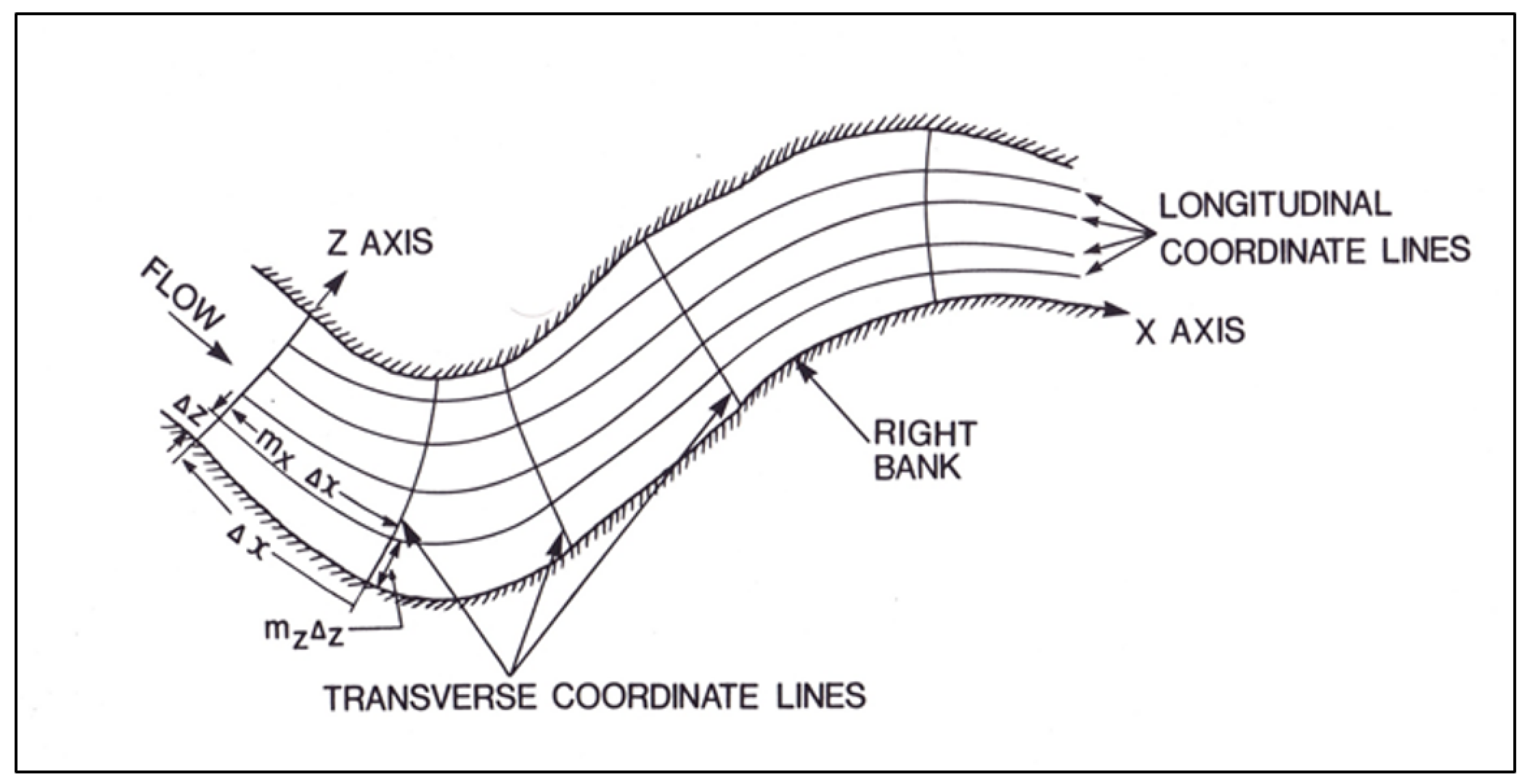
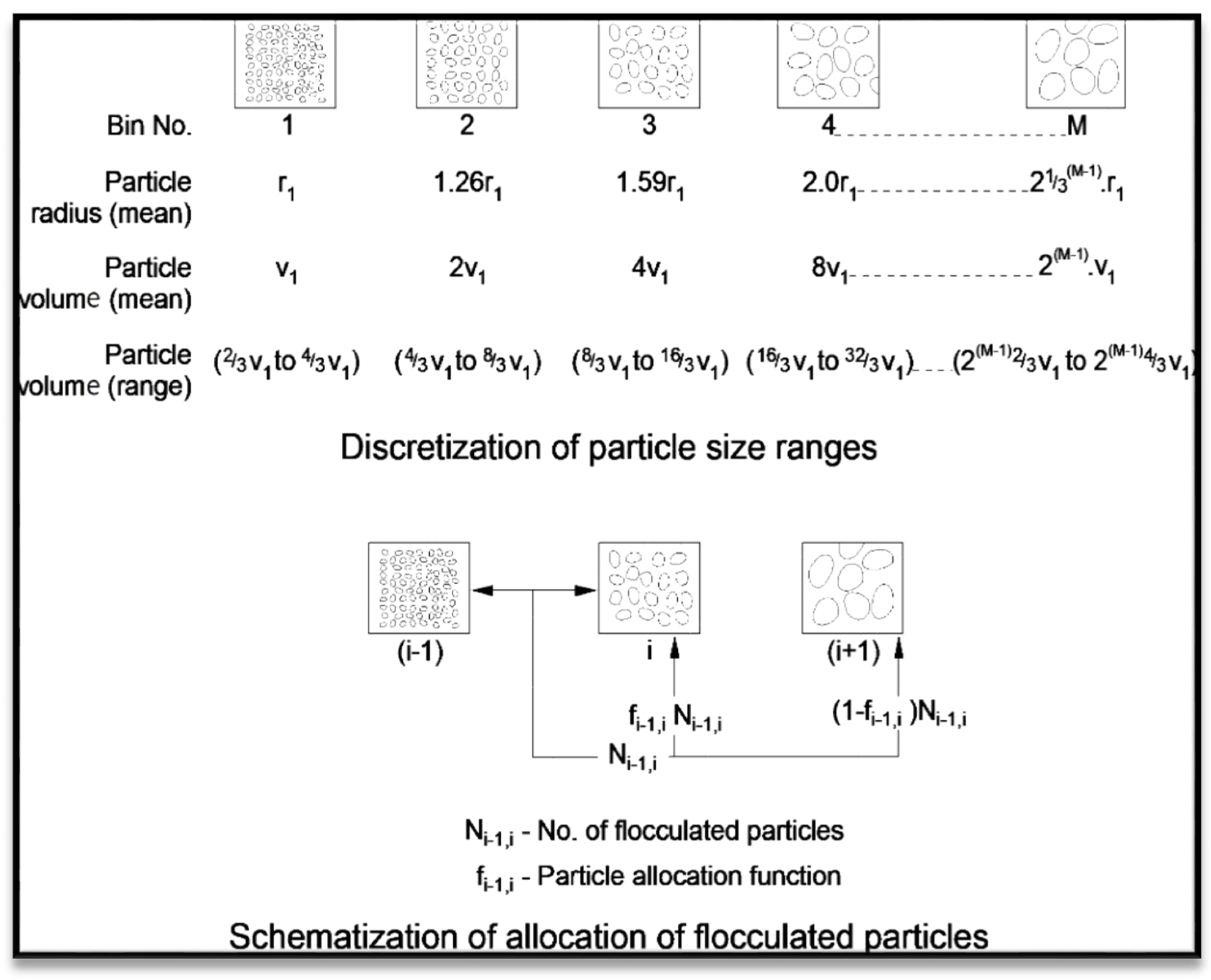
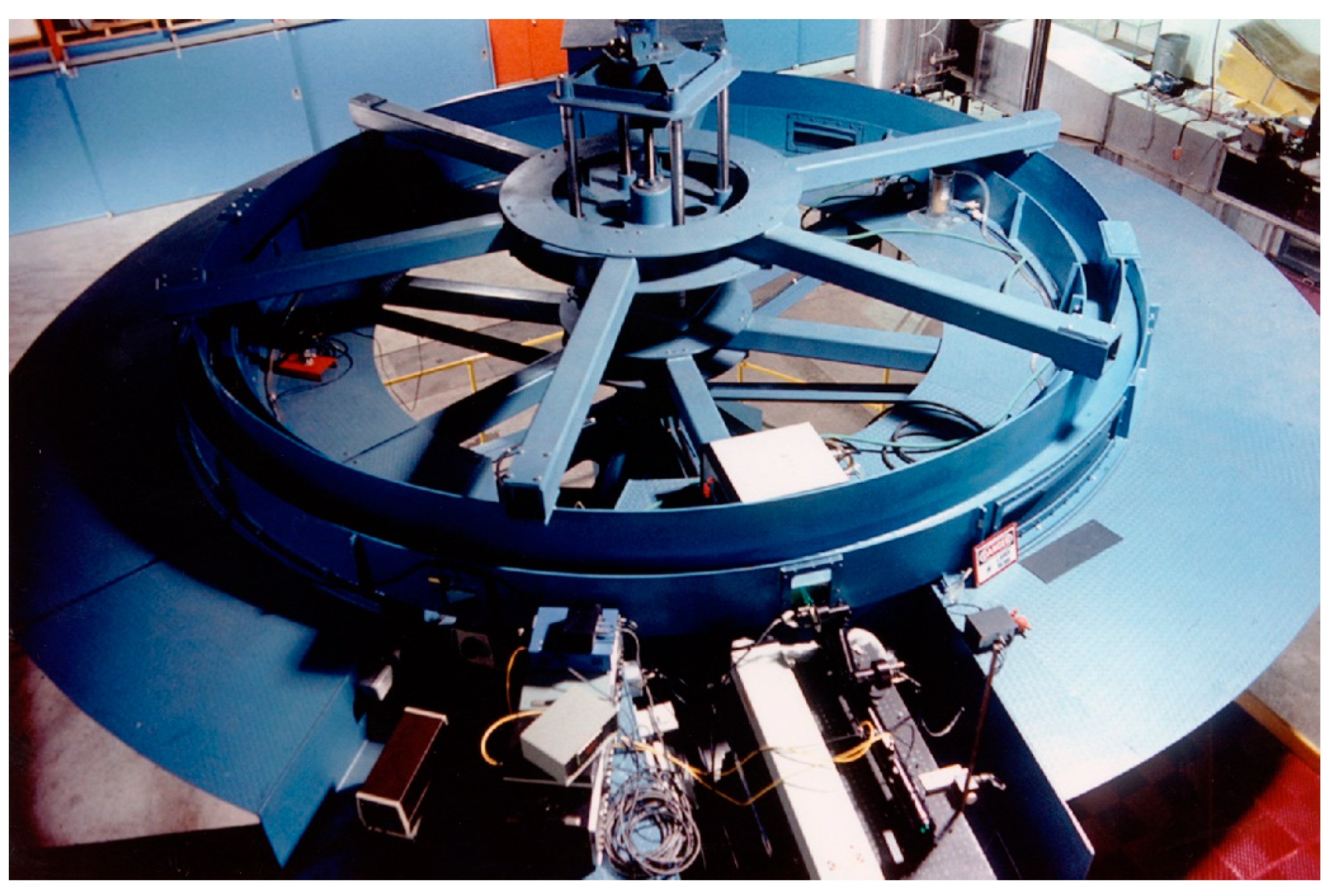
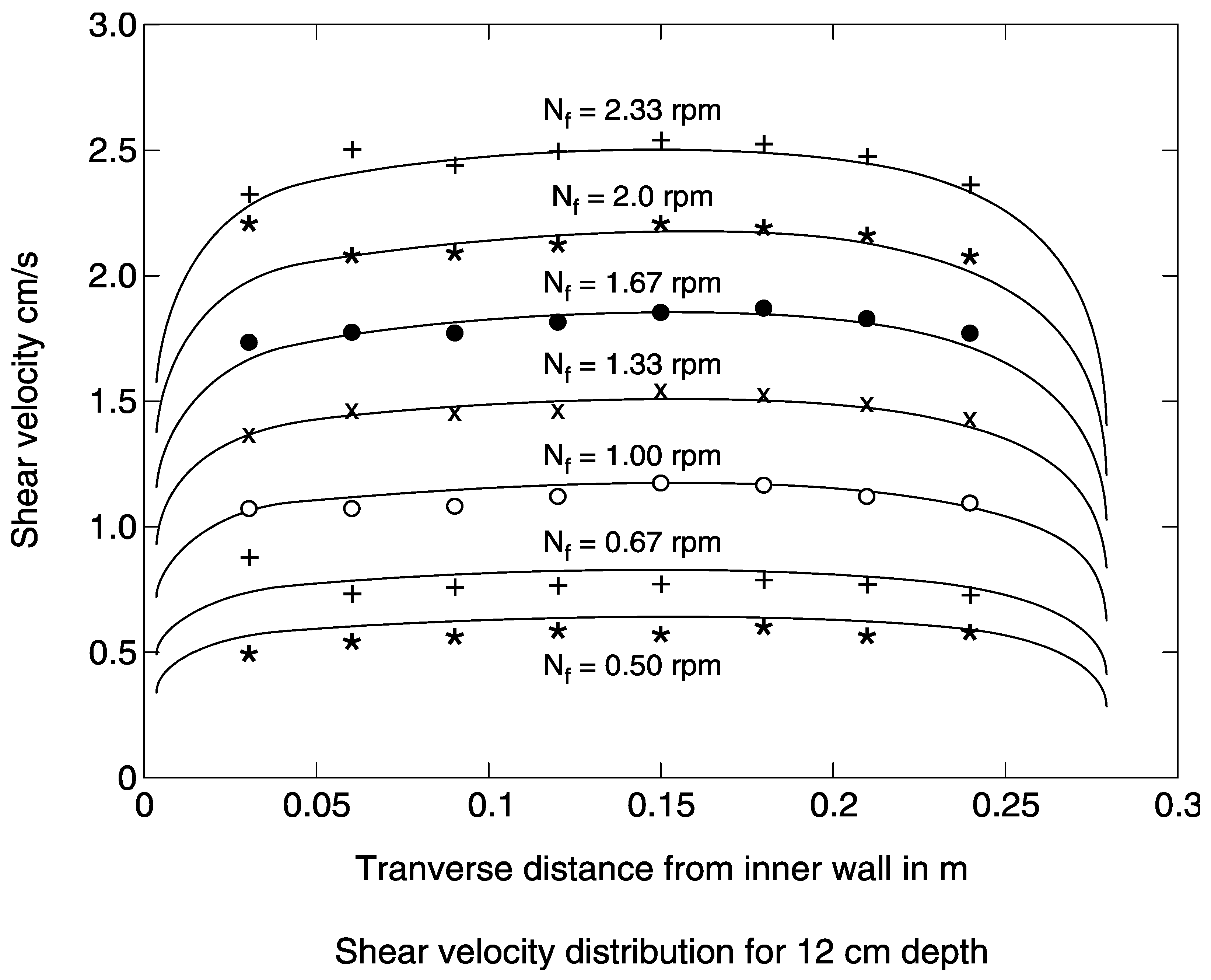
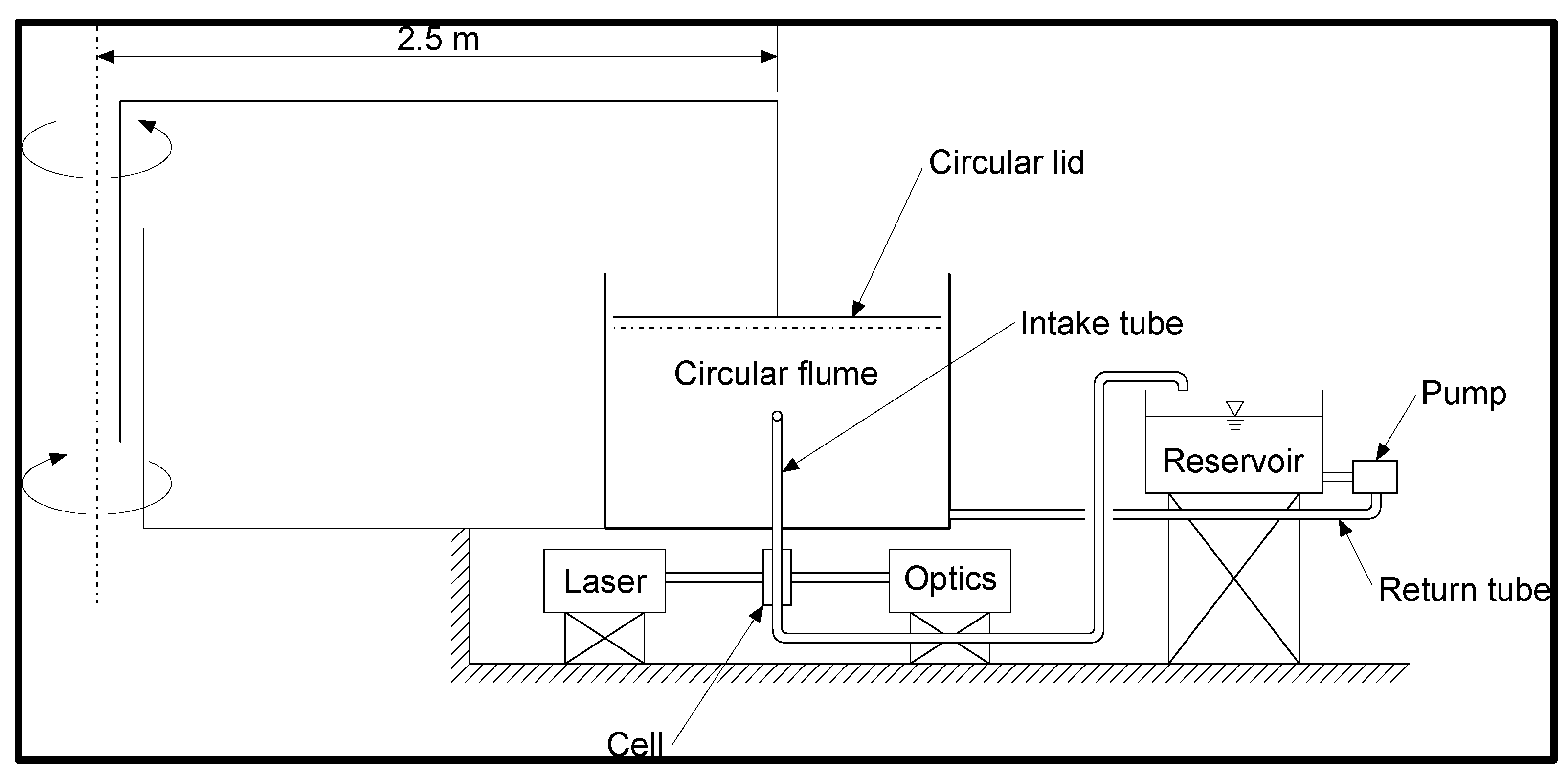
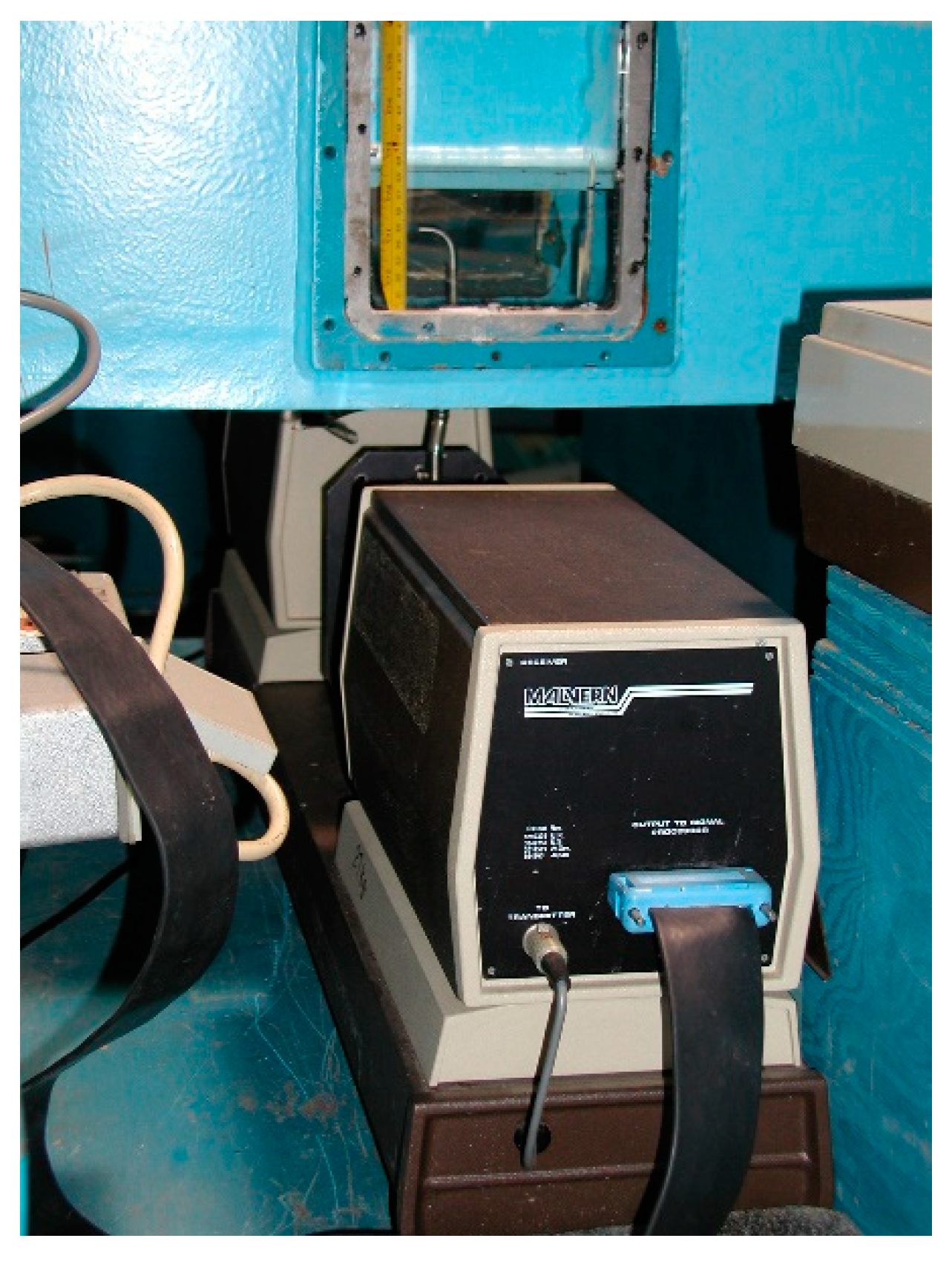
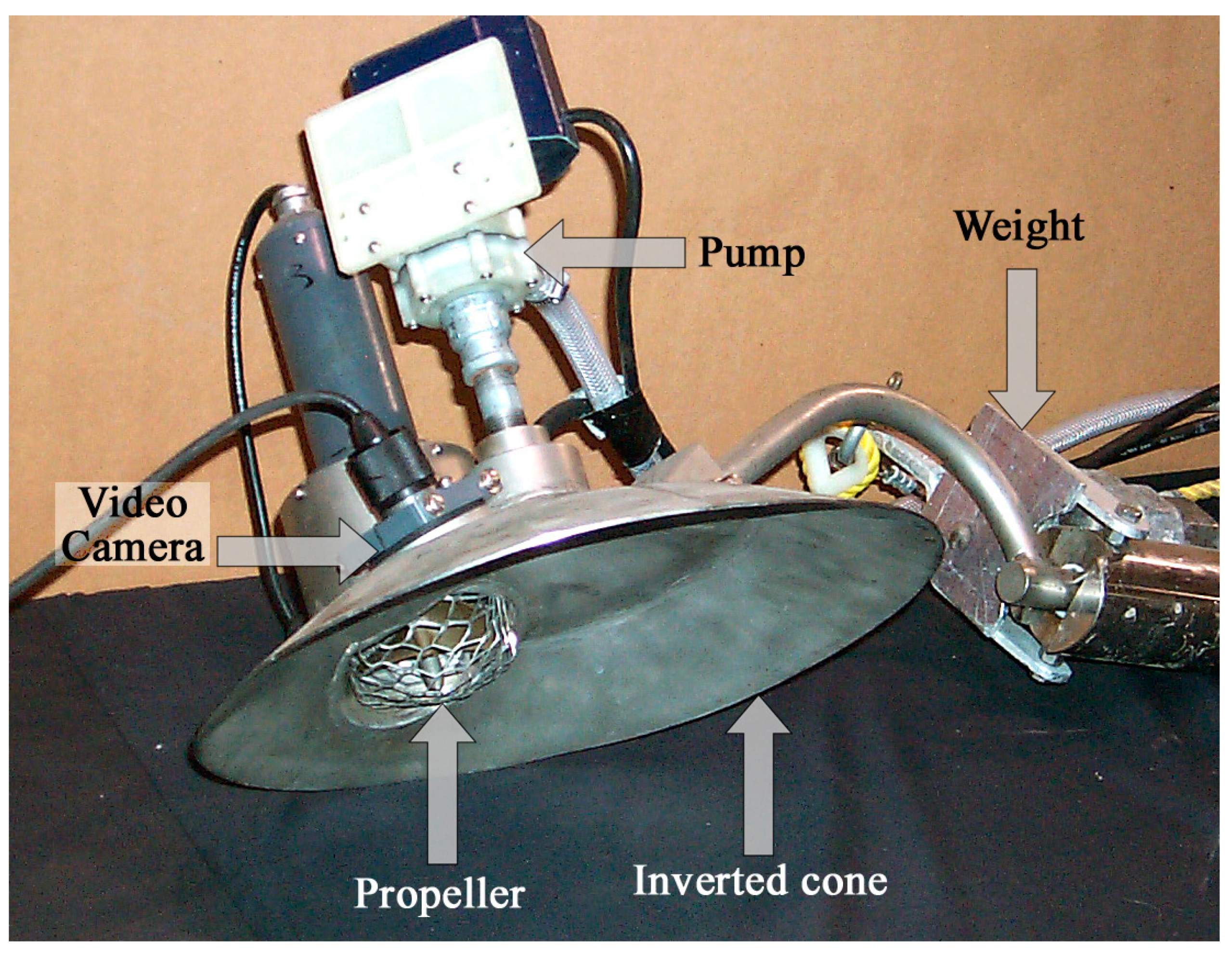
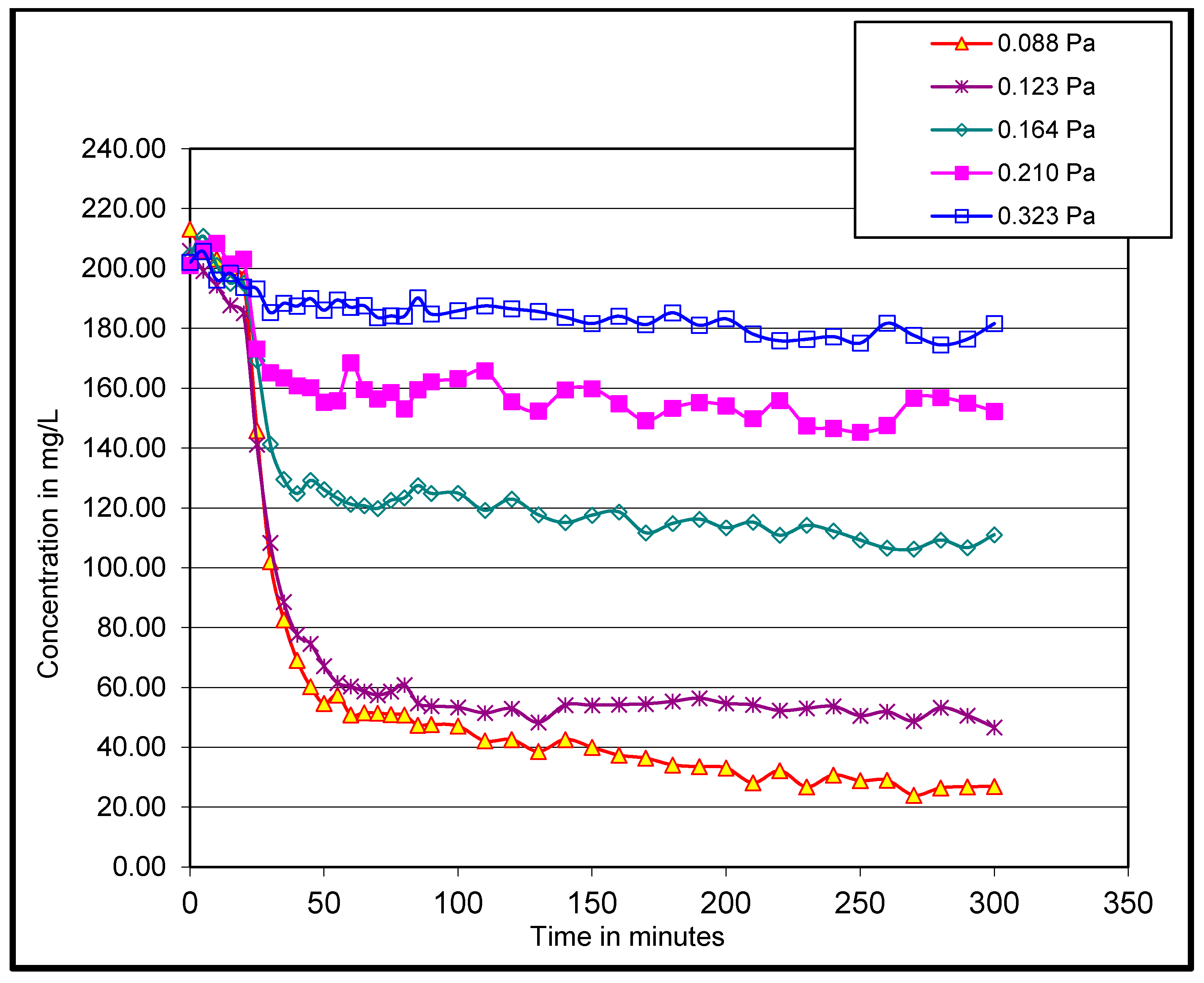
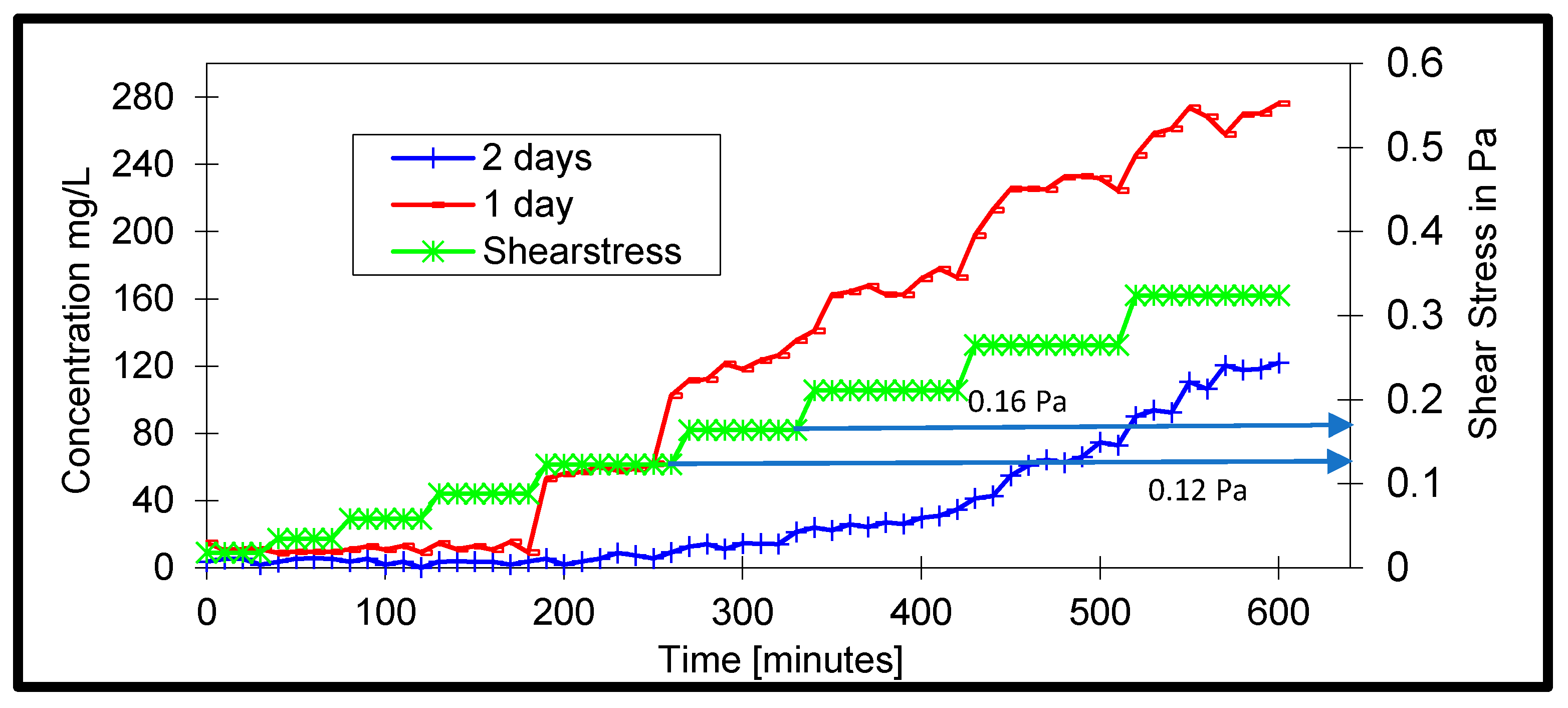
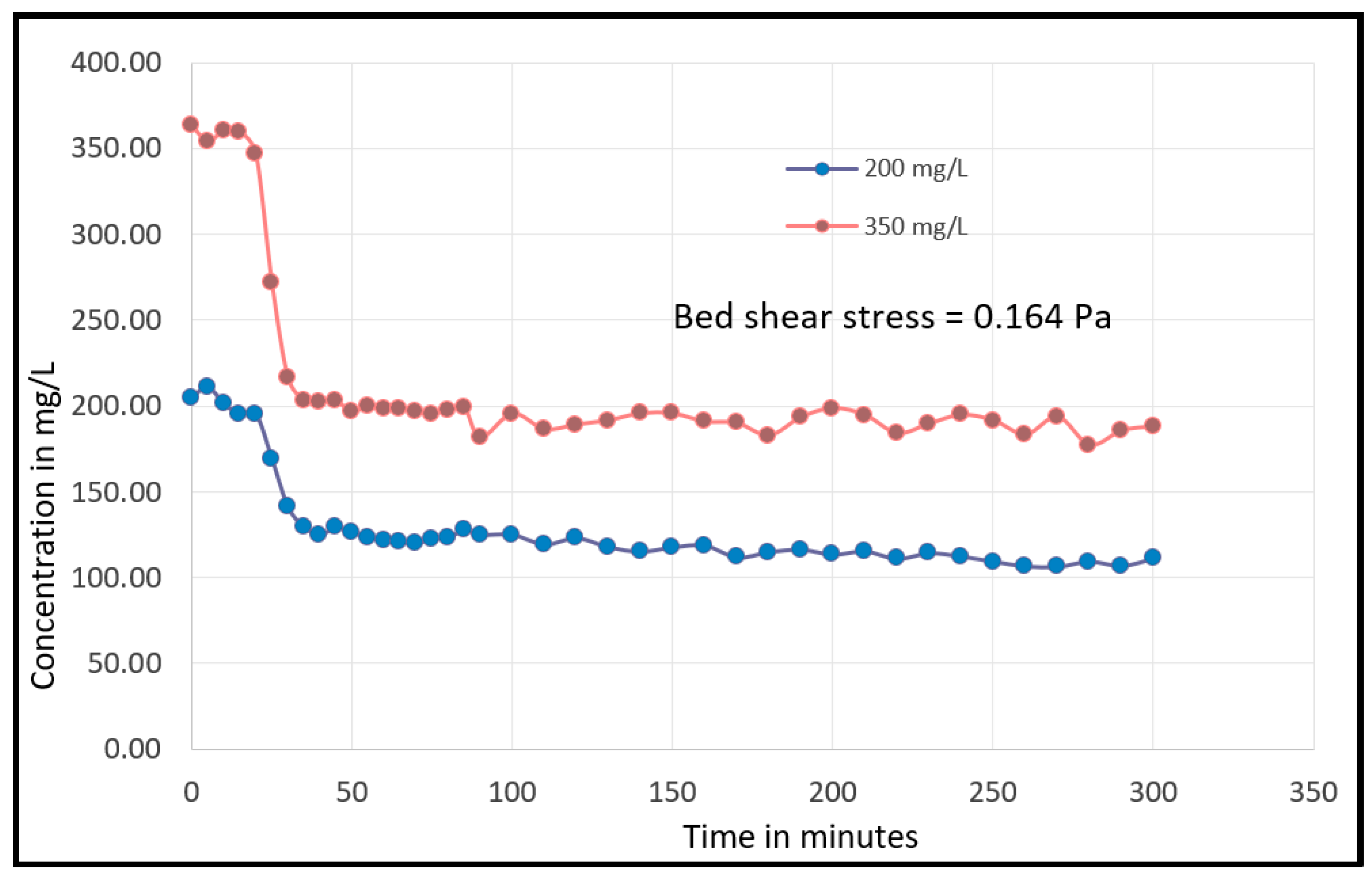
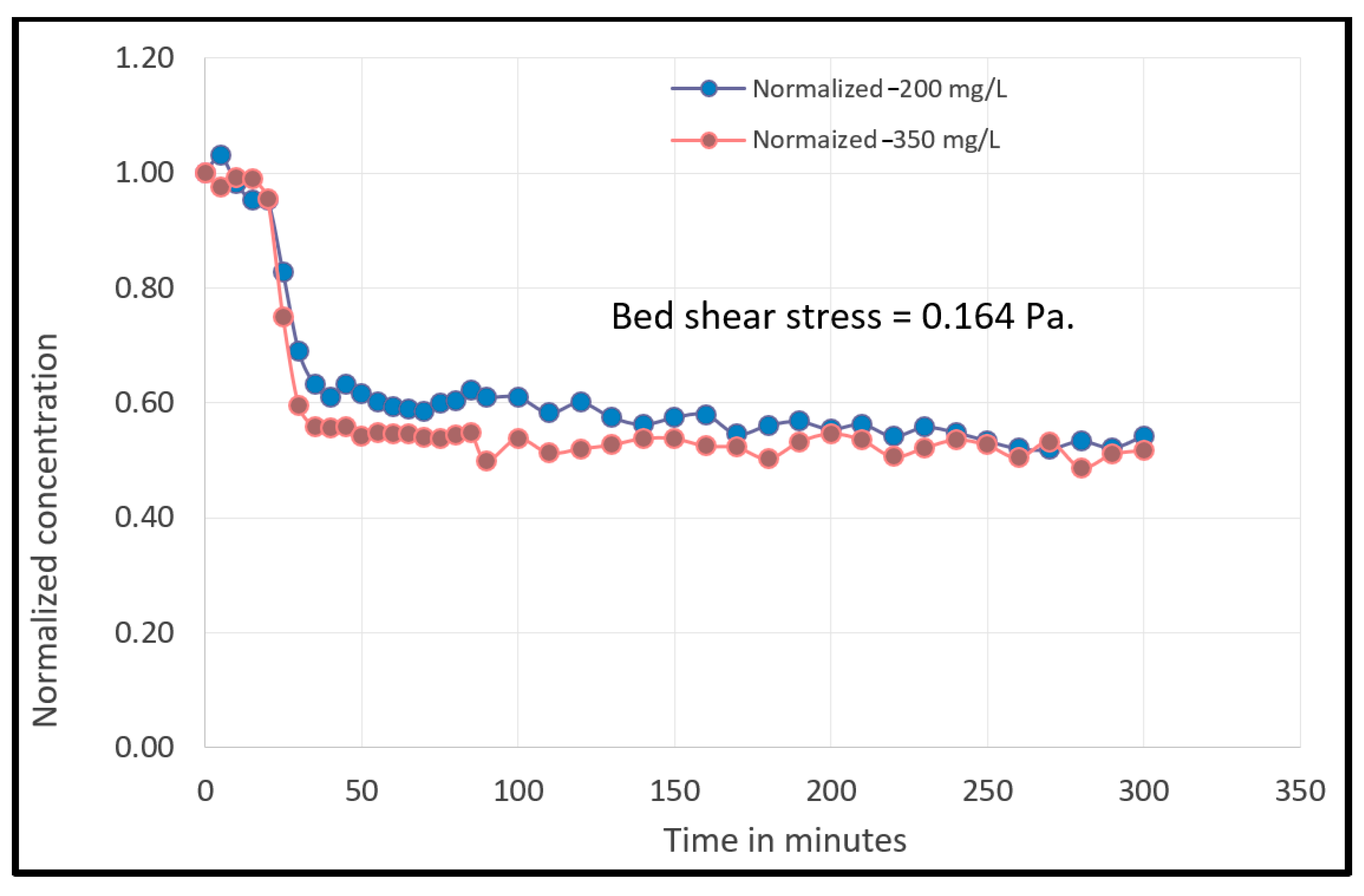
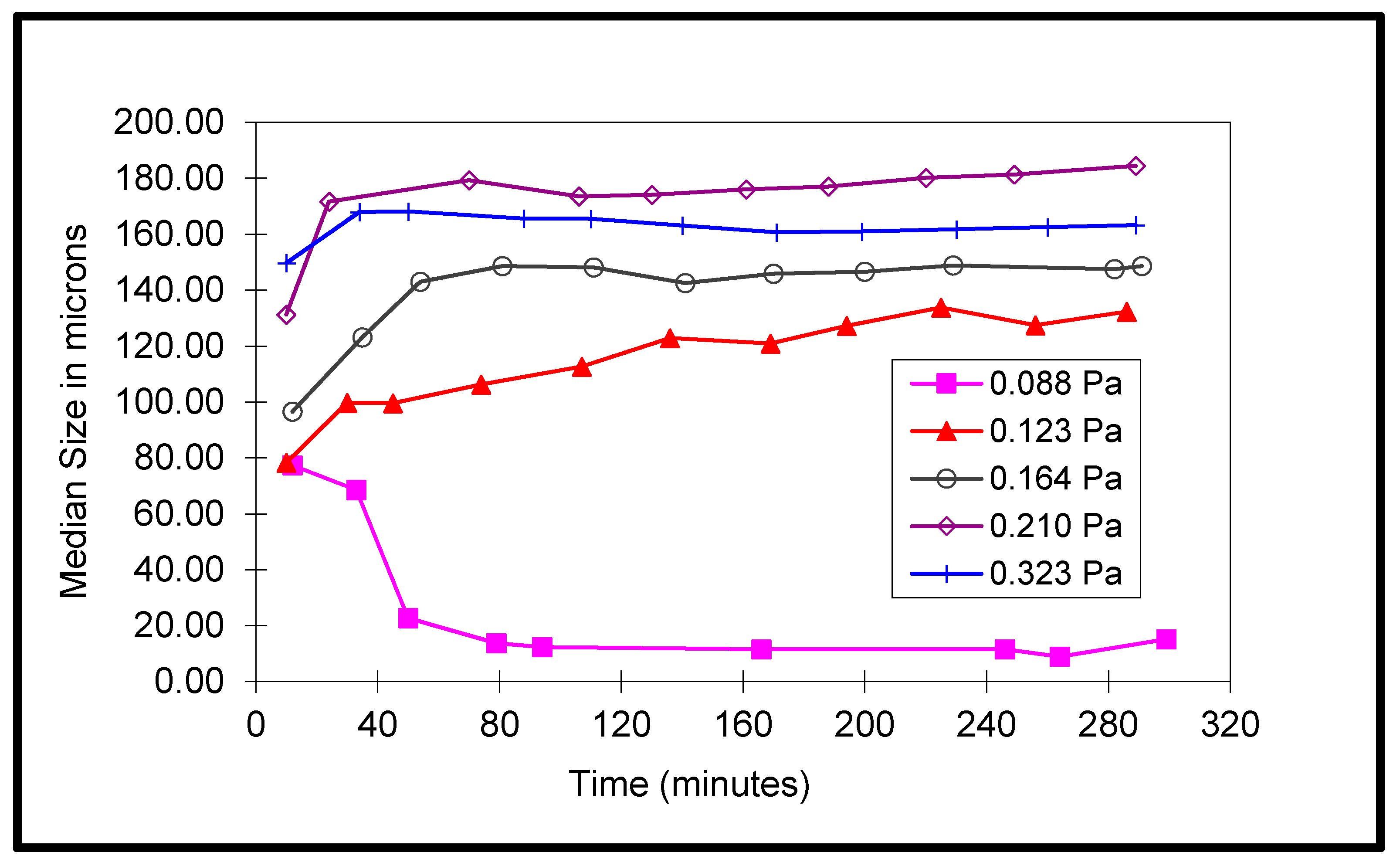
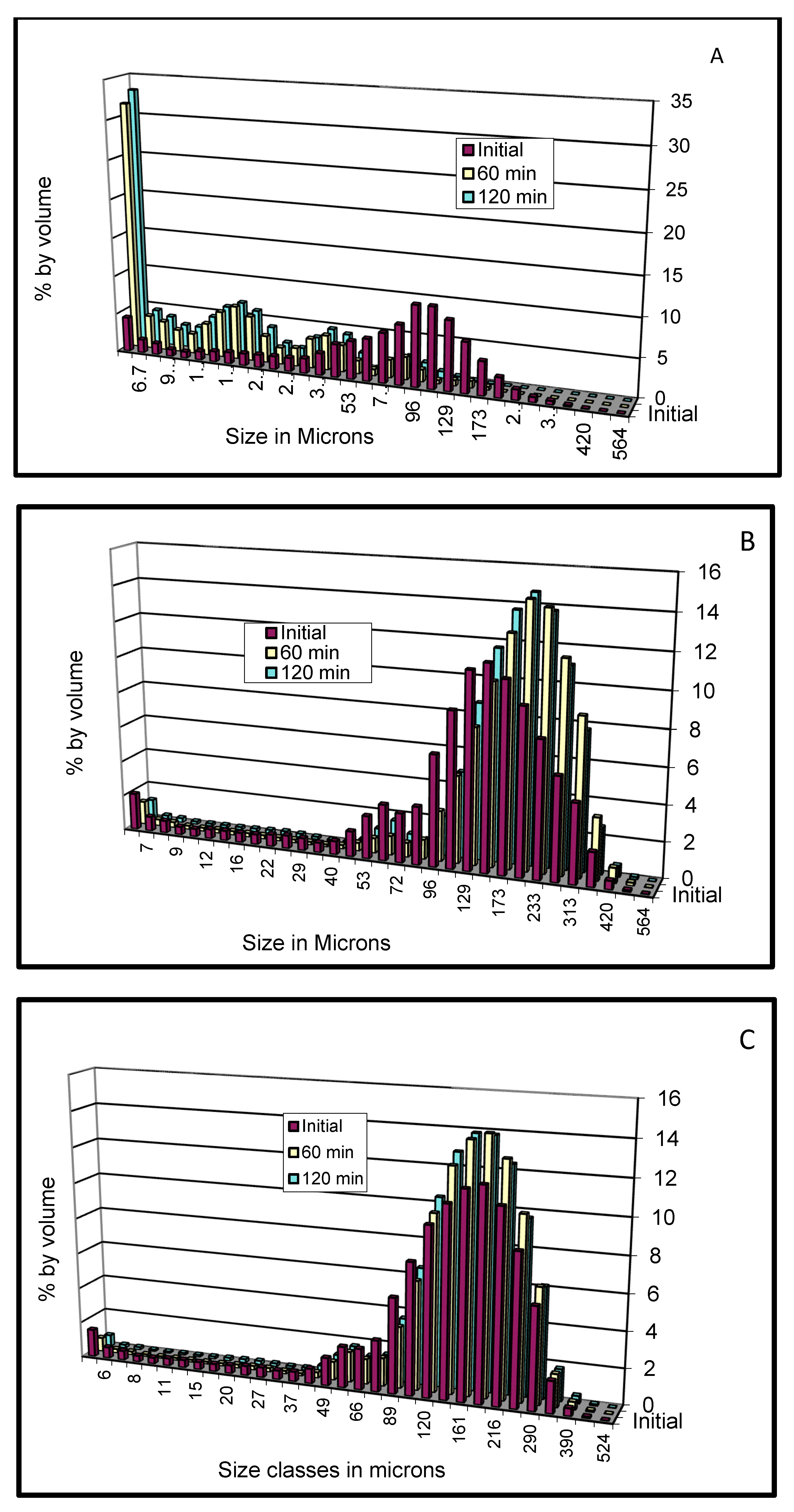
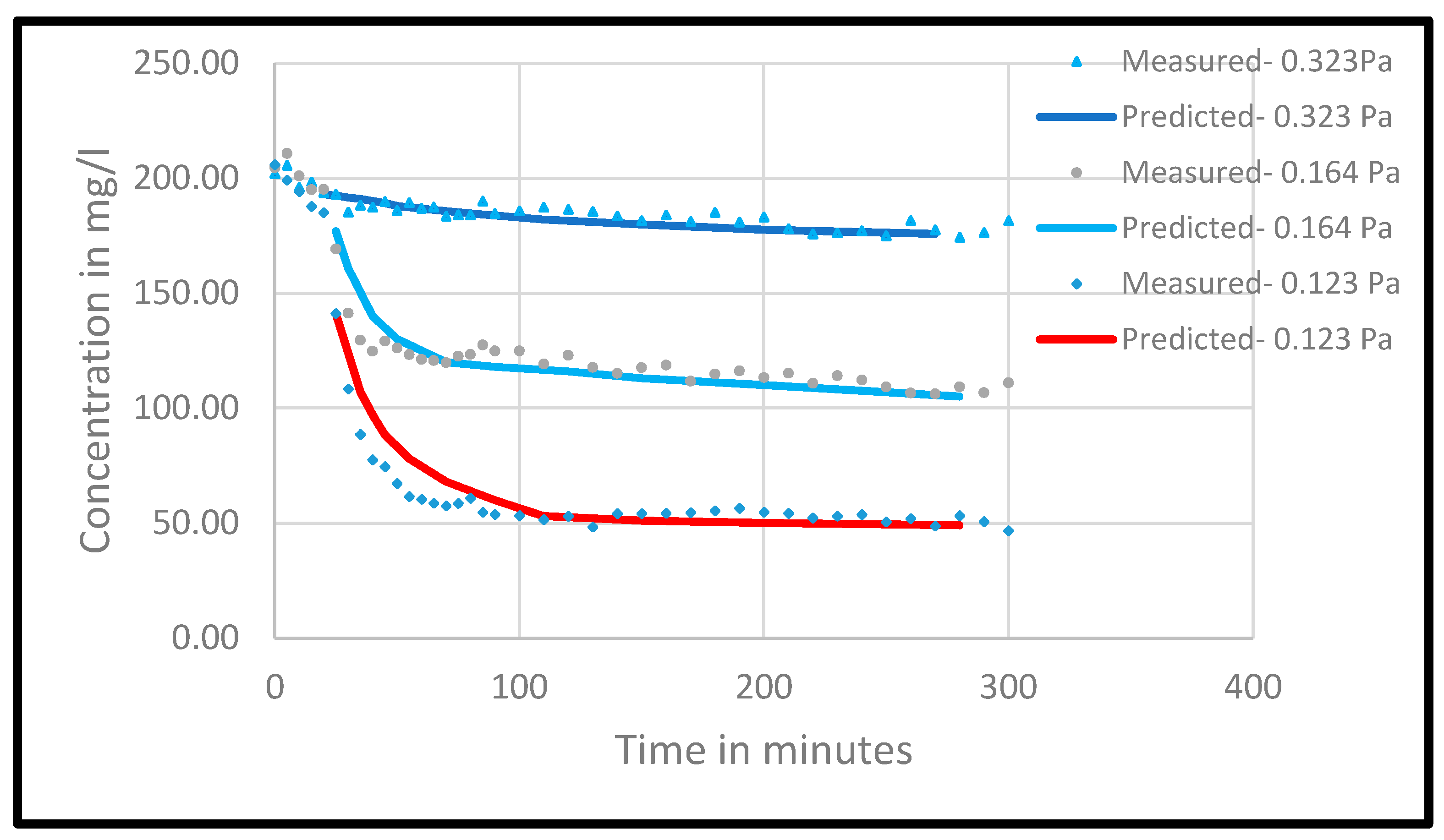
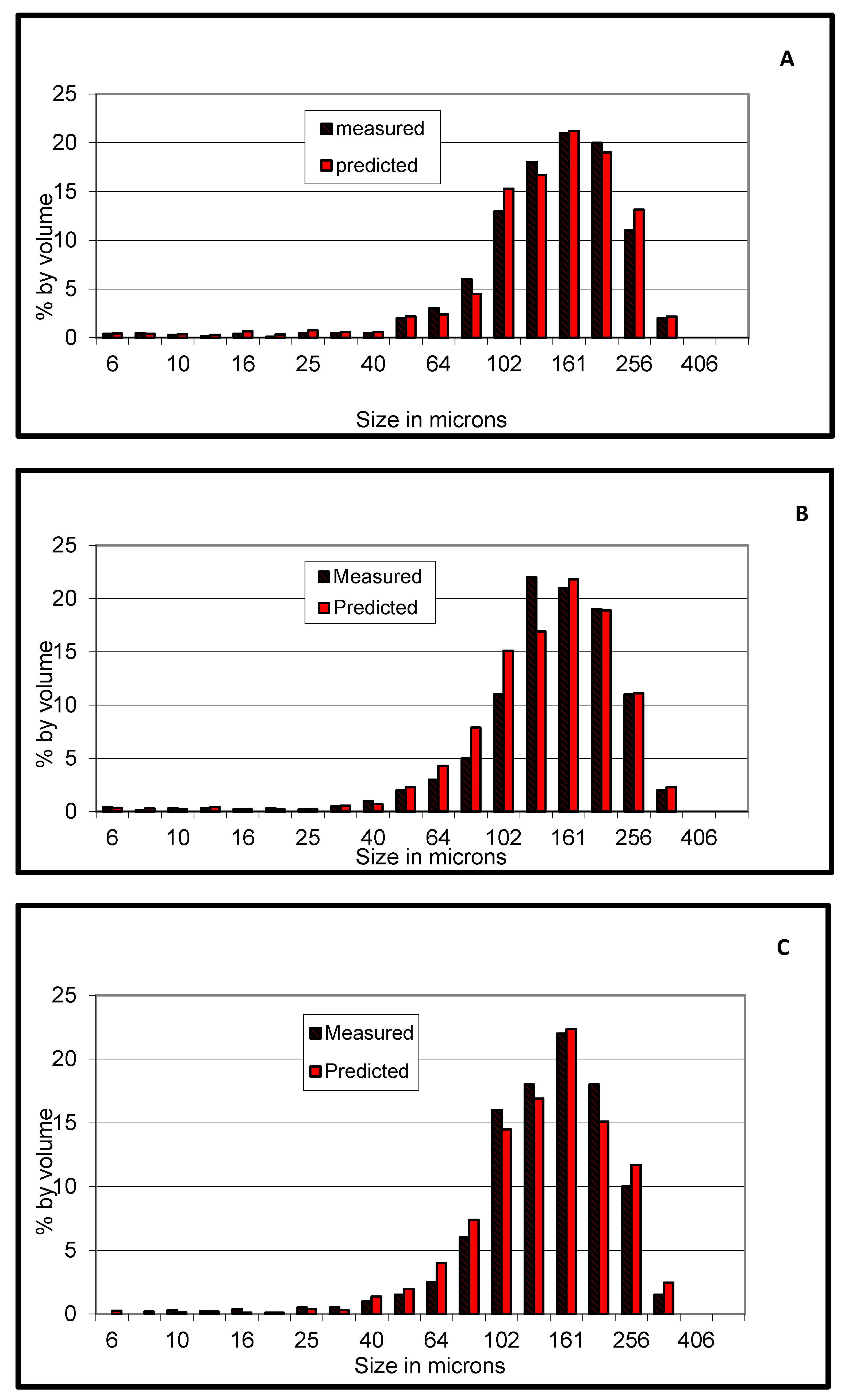
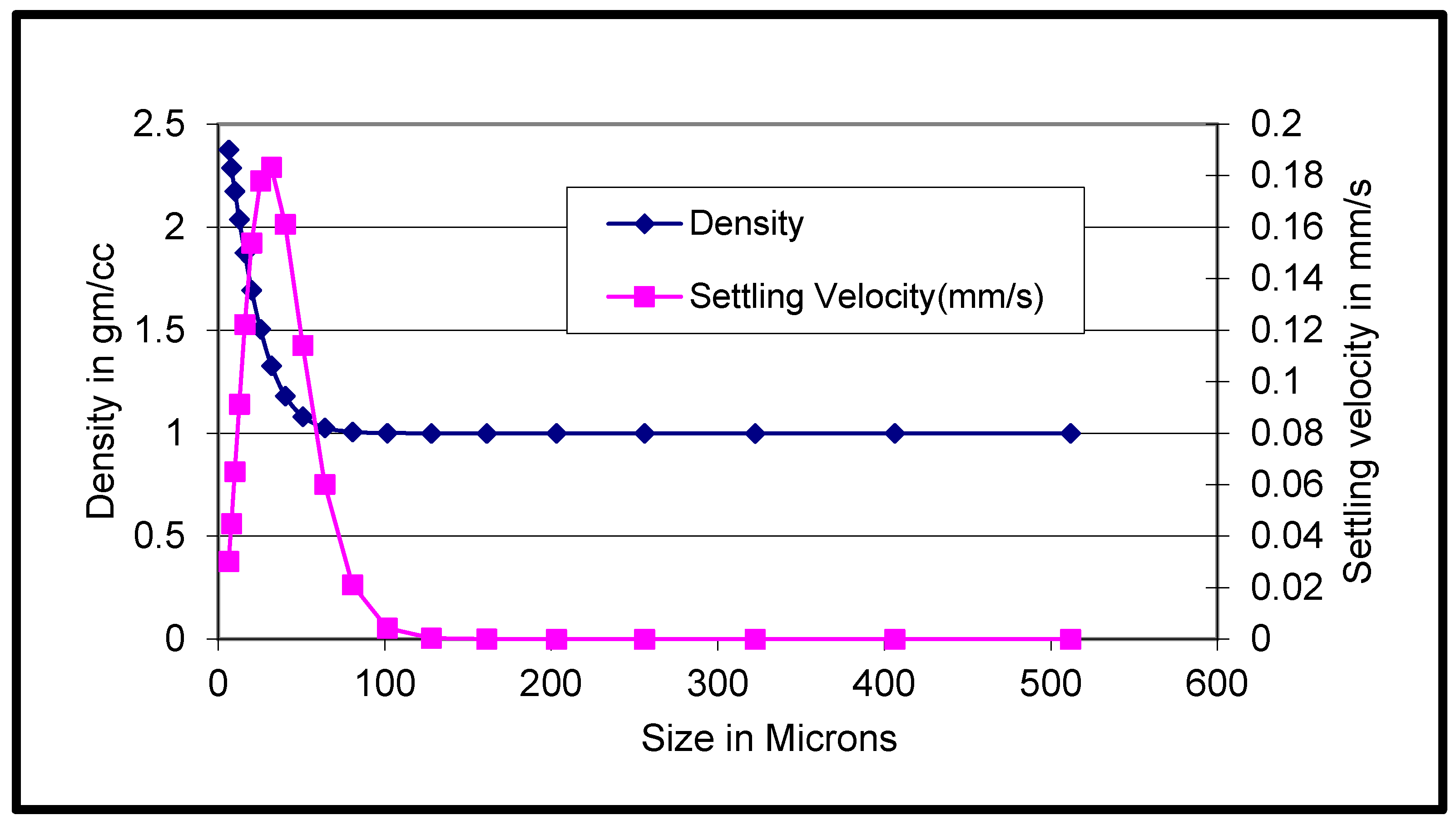
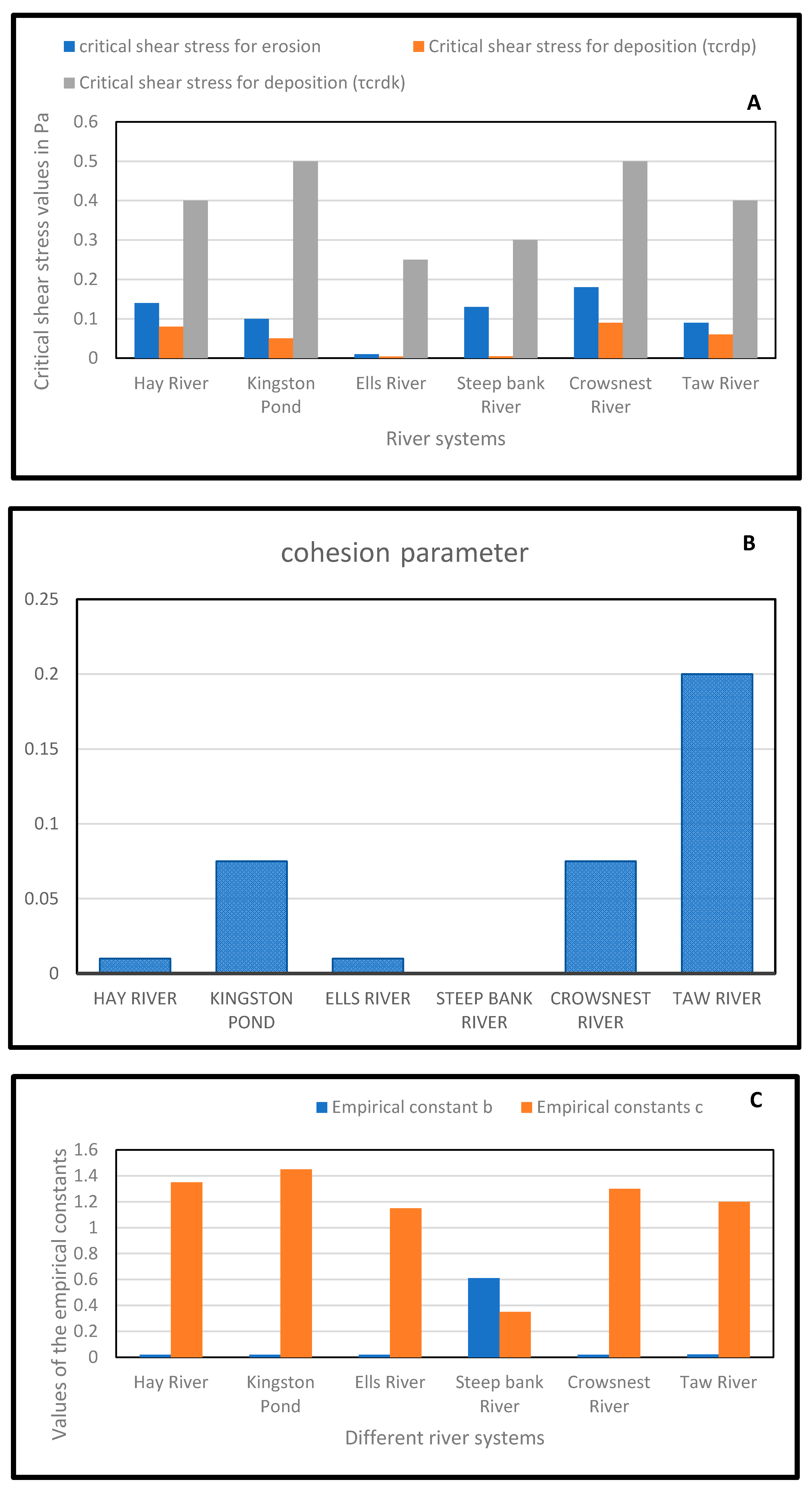
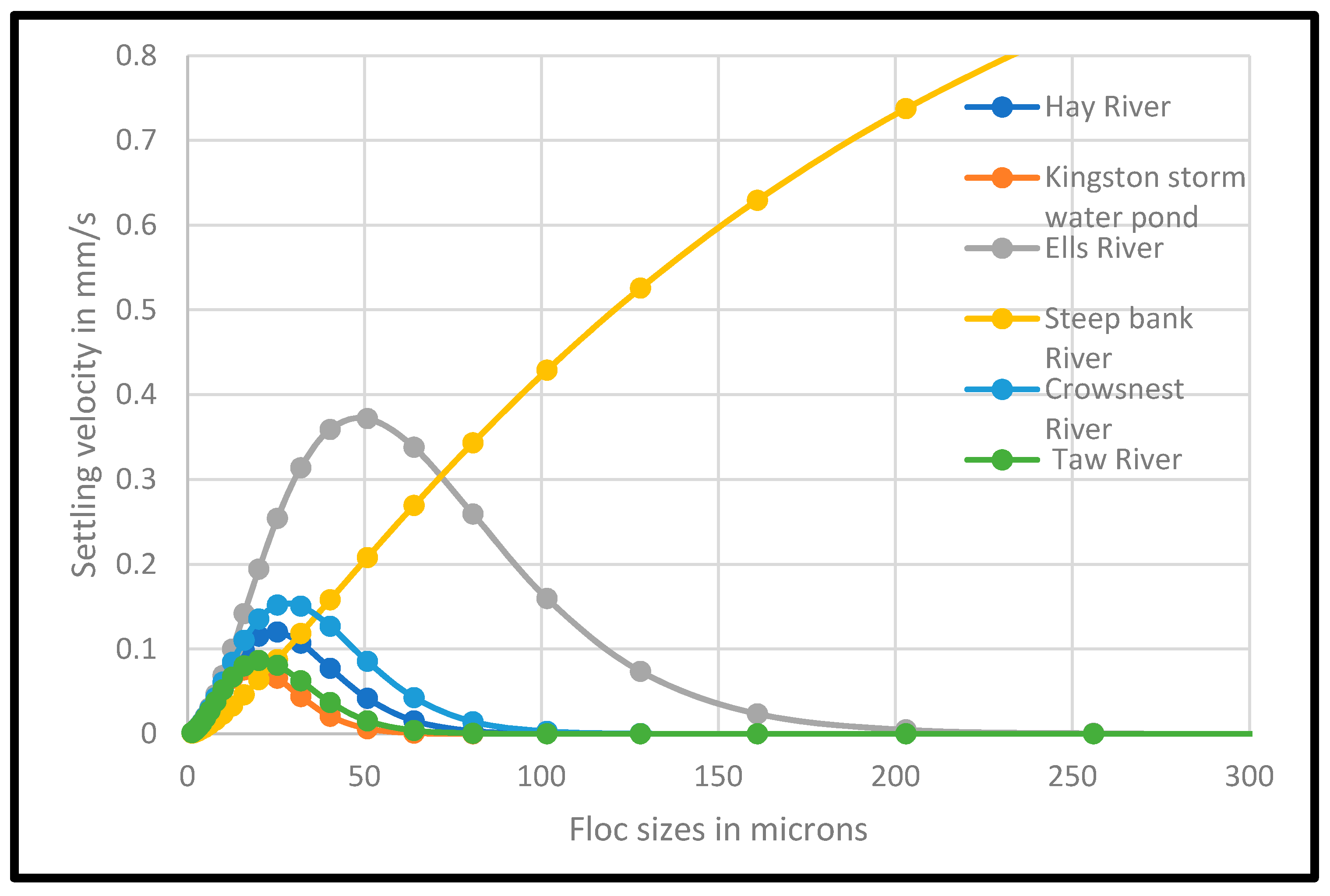
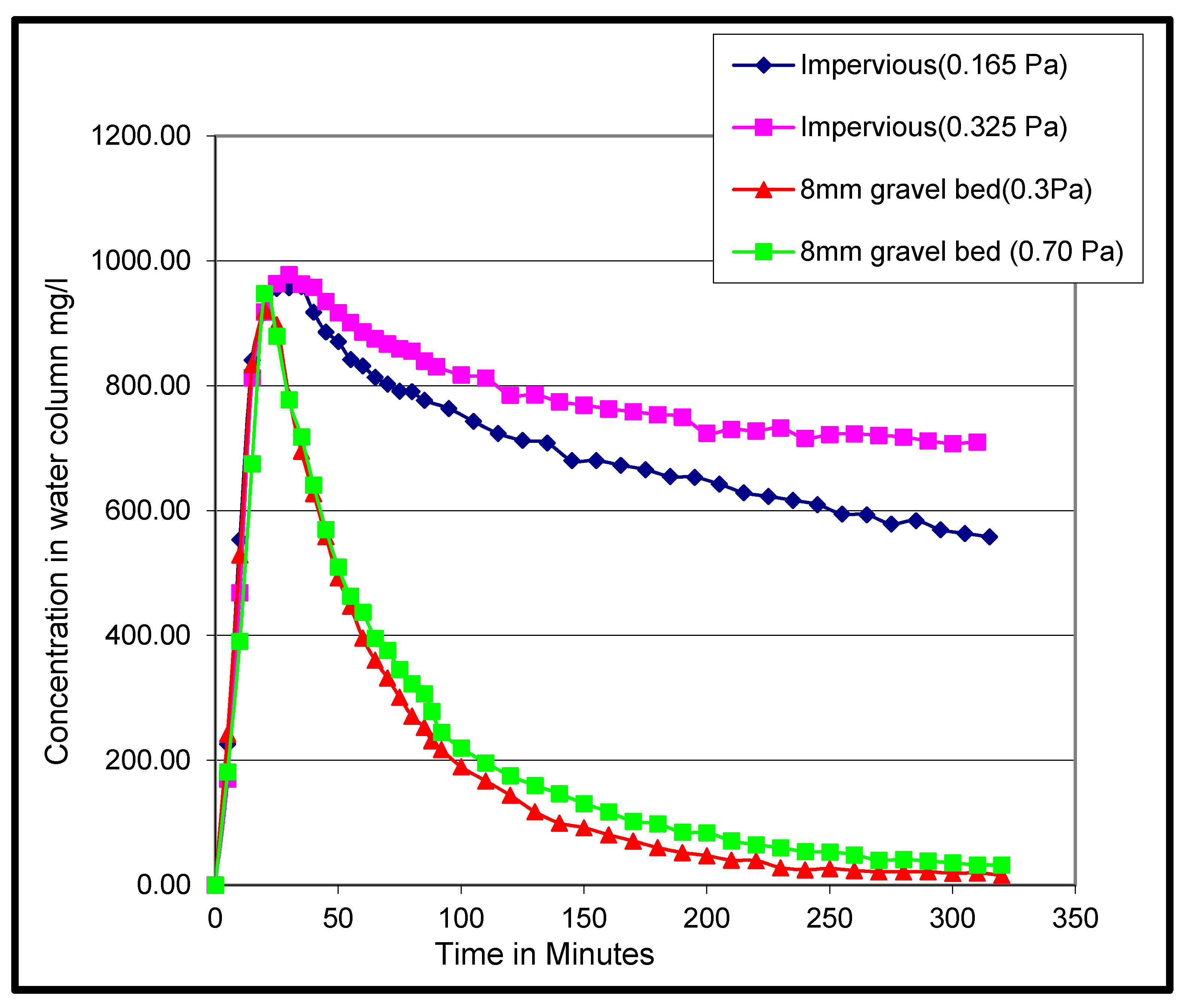
| Number | Input Data Needed for RIVFLOC Model | Possible Sources of Such Data |
|---|---|---|
| 1 | The plan form of river- reach to supply the metric coefficient Mx | A field survey to measure the cross sections at a number of locations along the river reach. |
| 2 | Flow characteristics such as h, U and Q | A field measurement of h, U and Q or use the computational method described in Section 2.2. |
| 3 | Upstream boundary condition for sediment concentration | A field measurement at the upstream boundary of the model domain. |
| 4 | Upstream boundary condition for the size distribution of the sediment | A field measurement of size distribution of suspended sediment using instruments such as LISST (see Stone et al. [38]). |
| 5 | Transverse dispersion coefficient Ez | Literature data on transverse mixing in rivers. |
| 6 | Critical shear stress for erosion and deposition | Laboratory measurements using a rotating circular flume described in Section 2.3. |
| 7 | Cohesion parameter, β | Laboratory measurements using a rotating circular flume described in Section 2.3. |
| 8 | Empirical parameters b and c appearing in the relationship floc size vs. floc density | Laboratory measurement using a rotating circular flume described in Section 2.3. |
| River Systems | τcre Pa | τcrdp Pa | τcrdk Pa | β | Empirical Constants | References | |
|---|---|---|---|---|---|---|---|
| b 1 | c 1 | ||||||
| Hay River in NWT, Canada | 0.14 | 0.08 | 0.40 | 0.010 | 0.02 | 1.35 | Krishnappan [34] |
| Kingston, storm water pond, Canada | 0.10 | 0.05 | 0.50 | 0.075 | 0.02 | 1.45 | Krishnappan and Marsalek [35] |
| Ells River in Alberta, Canada | 0.01 | 0.004 | 0.25 | 0.006–0.03 | 0.02 | 1.15 | Droppo and Krishnappan [36] |
| Steepbank River in Alberta, Canada | 0.13 | 0.000 | 0.30 | 0.000 | 0.61 | 0.35 | Krishnappan [37] |
| Crowsnest River in Alberta, Canada | 0.18 | 0.09 | 0.50 | 0.075 | 0.02 | 1.30 | Stone et al. [38] |
| Taw River in UK | 0.09 | 0.06 | 0.40 | 0.13–0.25 | 0.02–0.025 | 1.15–1.35 | Stone et al. [39] |
| River Systems | Optimum Floc Size in Microns | Maximum Settling Velocity in mm/s |
|---|---|---|
| Kingston storm water pond, Canada | 20.0 | 0.08 |
| Taw River, UK | 20.0 | 0.09 |
| Hay River in NWT, Canada | 25.0 | 0.12 |
| Crowsnest River in Canada | 32.0 | 0.15 |
| Ells River in Canada | 51.0 | 0.37 |
| Steepbank River in Canada | n/a | Monotonic increase as a function of floc size |
Publisher’s Note: MDPI stays neutral with regard to jurisdictional claims in published maps and institutional affiliations. |
© 2022 by the author. Licensee MDPI, Basel, Switzerland. This article is an open access article distributed under the terms and conditions of the Creative Commons Attribution (CC BY) license (https://creativecommons.org/licenses/by/4.0/).
Share and Cite
Krishnappan, B.G. Review of a Semi-Empirical Modelling Approach for Cohesive Sediment Transport in River Systems. Water 2022, 14, 256. https://doi.org/10.3390/w14020256
Krishnappan BG. Review of a Semi-Empirical Modelling Approach for Cohesive Sediment Transport in River Systems. Water. 2022; 14(2):256. https://doi.org/10.3390/w14020256
Chicago/Turabian StyleKrishnappan, Bommanna G. 2022. "Review of a Semi-Empirical Modelling Approach for Cohesive Sediment Transport in River Systems" Water 14, no. 2: 256. https://doi.org/10.3390/w14020256






